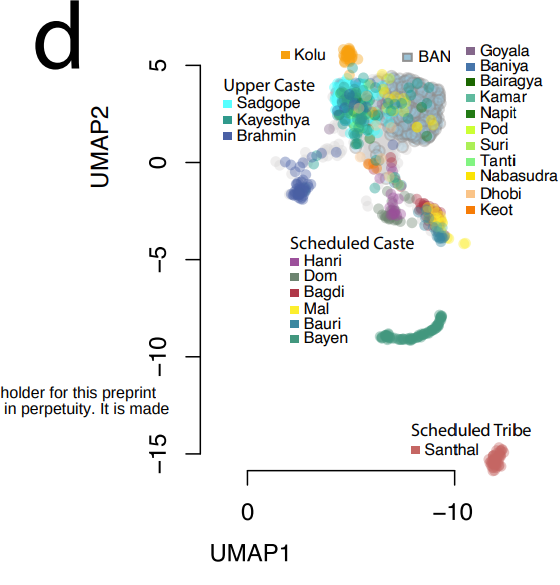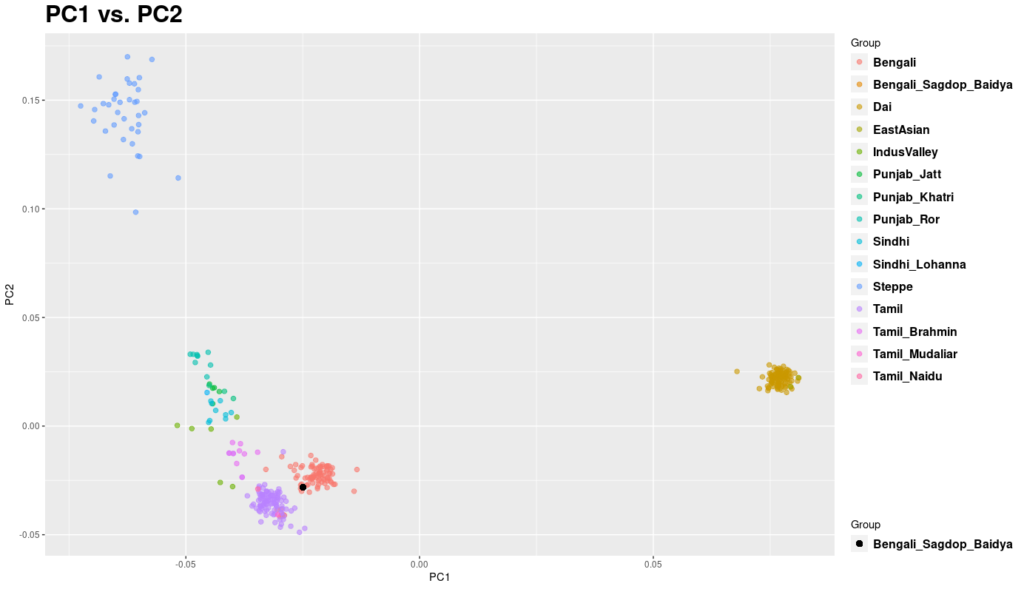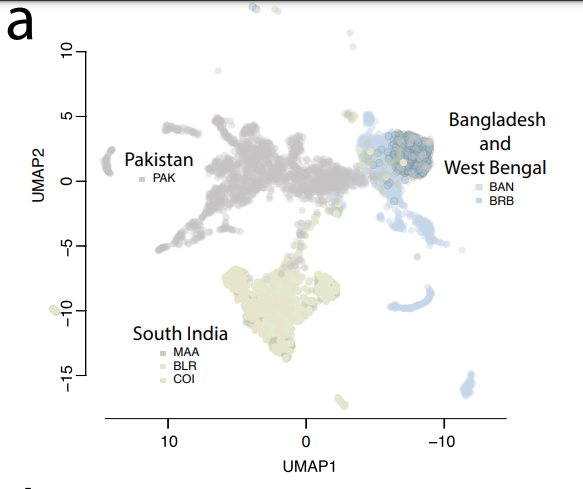I got a sample from someone where one parent was a West Bengal Sadgop, and another parent a Baidya with family origins in East Bengal. One hypothesis that I’ve see is that Baidya are basically Brahmins who lost their caste. Genetically this does not seem to be the case. Bengali Brahmins shift considerably toward the steppe samples compared to average Bangladeshis, and this individual does not. Rather, their uniqueness is that they have very little East Asian ancestry compared to the median. This is typical of non-Bramin West Bengalis. It is plausible to me that this individual’s Baidya parent, from East Bengal (Bangal), had more East Asian ancestry than their West Bengali (Ghoti) parent, so you see an average.
Though there are some exceptions, it seems that the non-Brahmnin bhadralok castes did undergo ritual uplift from that of conventional peasant cultivators at some point in Bengal. This seems similar with regard to Kayasthas in UP, but not in Maharashtra, where CKPs seem to have an affinity with Brahmins distinct from the Maratha cultivators.
Update: I found a preprint that pretty much answers all the questions re: Bengalis.
Here is a panel with a UMAP representation of genetic distance, and you see West Bengal is adjacent to Bangladesh. But there is a “tail” of individuals that are parallel to South Indians.
This UMAP makes clear Bengali Brahmins are distinct from Kayasthas and Sadgop. These populations seem roughly similar to most Bangladeshis except they are shift over, and I assume this means less East Asian ancestry, as PCA seems to how:



the UMAP is better at distinguishing close groups but doesn’t give you as much info on continental admixture. santhal have lots of east asian, but i am long wondered about the nature of a half a dozen individuals in the Bangladesh 1K sample that have no east asian ancestry and look south indian. are they scheduled caste individuals? are these more common in west bengal? east asian admixture in bangladeshis dates to before 1000 AD, closer to 500 AD. what’s going on?
The outlier samples from the BEB set have like 10+ extra S-Indian, non-existent Asian (when the Asian component should be around 11-12%) and this is more of a minority thing but they have lower amounts of both NE-Euro and Caucasian. They have the same Baloch tho. They’re either some colonial era migrant import from South India or like the most aboriginal people of the land from ancient times, idk.
My bet is on the former, they’re definitely not ethnic Bengali people but South Indians, that’s who they cluster beside on those PCAs.
they are a community. you can see from 1KG ID numbers they were collected at the same site at the same time
havent read the full paper. so correct me if im wrong but that if they are a community who lives in one specific area and score like south indians and not like ethnic bengalis, wouldnt the most logical assumption be that they are south indian migrants from days of old? what do you think?
correct me if I’m misassessing things. I ran their g25 samples on genoplot on different calculators and the BEB outliars always stand out so I think the safe bet is they are not ethnic Bengalis.
i think british era migrants. but who are they? they have to be surveyed somewhere in an ethnography?
There is a tribe called Oraon, Dravidian speakers, who are relatively recent migrants to Bengal and Assam, working in plantations often. Maybe a connection there?
Myanmar border has tamils from last 4 to 5 generations, and these might be of their group.